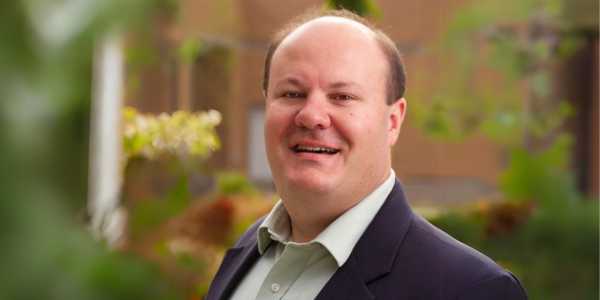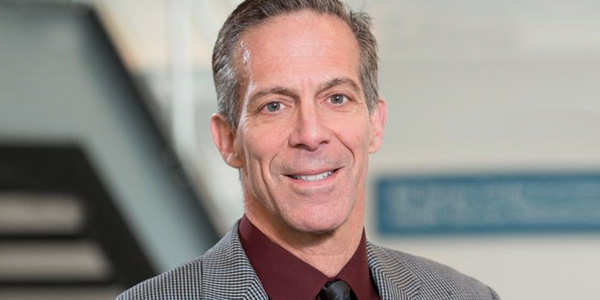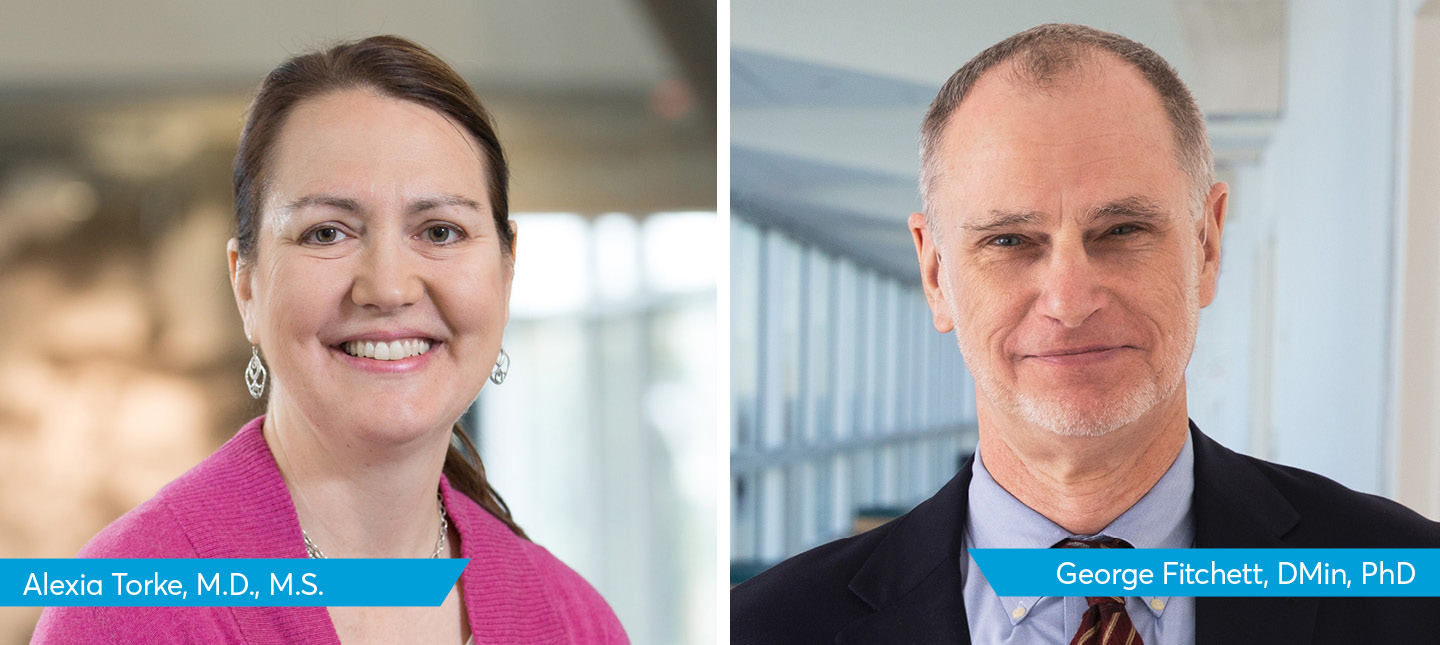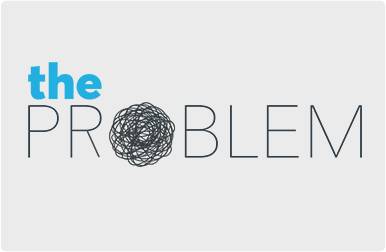Transcript
Phil Lofton:
I’m going to say a few words. Try your best to remember them, and, unless it’s going to be weird where you’re listening to this, try to repeat them back, ok?
Banana. Sunrise. Chair
Ok, repeat them back to me.
All around the world, the recall of words is often used as a part of what’s called a cognitive screener or a cognitive assessment
Cognitive assessments can vary immensely in their length and depth, from just a few minutes long to several hours. However, they all have the goal of assessing the memory of adults and are not just for the purposes of screening for Alzheimer’s and dementia. There are cognitive assessments for stroke, Traumatic brain injury, and other maladies that can affect people of all ages.
They’re rigorously developed, validated, and tested, and they’re only a part of the toolkit we have for identifying Alzheimer’s and dementia.
Today, we’re going to talk about cognitive screening, diagnosis of Alzheimer’s, and look at exactly what happens when an older adult is diagnosed with Alzheimer’s.
Welcome to The Problem. Can you tell me what those words were again? I’m your host, Phil Lofton.
[THEME]
Screeners are a standard tool in doctors’ offices for a variety of illnesses. Some of them are so ubiquitous and baked into the process of your doctor’s visit that you may not even be aware of them.
You’ve likely been asked if you feel safe in your home. You might’ve been asked if you’ve had little interest in doing things that would normally interest you, or if you’ve felt down or depressed.
These questions are asked in order to help doctors see any red flags for problems. They’re not meant to diagnose you, really, but they are meant to get doctors asking questions that could lead to a diagnosis.
Say for example that when the doctor asks you whether or not you feel safe at home, you respond no. The doctor would ask why, and would likely ask some related questions to try to figure out if you were experiencing intimate partner violence. Perhaps, though, you’ve just had a lot of crime near your house and you feel nervous at night. In this case, you’ve screened positive on a domestic violence screener, but a more thorough exam by a doctor has found out that’s not an issue for you.
Say a doctor asks you if you’ve felt down, depressed or hopeless over the last two weeks, though. And suppose you say yes. This leads to further questions about your mood, activities, and mental health, and let’s say, hypothetically, that this ends with you being diagnosed with clinical depression. That’s an example of a positive screen leading to a diagnosis.
In other words, screeners don’t provide the diagnosis, but they help doctors arrive at a diagnosis.
Screeners are especially helpful for Alzheimer’s disease and dementia. Asking a patient to remember a few words and perhaps draw a quick sketch are worlds easier than some of the tests used to reach a diagnosis, like MRI’s and extensive memory assessment
Since 2011, all older adults on Medicare have been able to get at least one screening for dementia per year. It takes place during the annual wellness visit, a preventive visit that’s designed to help seniors stay ahead of health concerns and maintain their care plans.
But that portion of the wellness visit isn’t always done. In fact, only 16% of seniors on Medicare say they receive regular cognitive screens during these sorts of visits.
Here’s Natalie Sutton, chapter executive with the greater Indiana chapter of the Alzheimer’s association, on why some older adults may forgo the screen, if it’s offered to them.
Natalie Sutton:
We did a study of the cognitive exams and found that people say that those exams are important, but they’re not actually receiving them. And physicians say those are important but aren’t always delivering that cognitive exam as part of the, the Medicare wellness visit. So thinking about how an organization like ours might be able to influence a system and make sure that something that’s so key to the diagnosis process or the diagnostic process actually happens for people living with the disease, or people who might be at risk. So I think that’s a good example.
Phil:
So I’m really curious, like what are some of the biggest reasons that you hear from patients as to why they don’t do that part of their wellness check? Is it, is it fear of obtaining the diagnosis?
Natalie Sutton:
I think that’s a big piece of it. and I think it, it, I would come at it from a lot of different angles and levels that, you know, it might be a physician level or a, a practitioner level or that individual level. you know, I think sometimes, certainly people fear a diagnosis of Alzheimer’s disease. but also I think a lot of people feel like just given where we are with no disease-modifying drug or treatment, it’s like, “Well, why would I give that information to the patient? Or why would I make that diagnosis if there’s nothing that can be done?” so, you know, we’re really big proponents of the fact that there are things that you can do to live with a better quality of life with this disease and to live longer or to remain home or even just to live the life you want to live with this disease. You know, we certainly can’t control it. We can’t control that someone has the disease. But by acknowledging it, we may be able to plan and influence that quality of life. But I think that, I think that that unfortunately is a big factor that people, you know, healthcare providers and individuals feel like there’s nothing they can do. So why would, why would they want that information?
Phil:
At the Indiana University Center for Aging Research at Regenstrief Institute, a lot of work has been done on assessing the harms and benefits of cognitive screening, especially screening that’s done during visits with your primary care doctor.
In the CHOICE study, led by Nicole Fowler and Malaz Boustani, which recently published findings from its 5-year run, 4000 patients were recruited to determine whether there were any harms or benefits to patient quality of life due to cognitive screening – for example, whether or not if patients who were screened positive for dementia experienced depression. Or, if patients took initiative to complete advance care planning after a negative screen.
They found that neither was true. There wasn’t harm- people did not get depressed or anxious from being screened, and we also didn’t see any benefits- such as improved quality of life or less visits to the ED or hospital.
Now, that’s just talking about screening. In just primary care. It’s not saying that there’s no benefit to catching Alzheimer’s early – there are many benefits of early diagnosis, including opportunities to try to slow the progression of the disease, establishing a care plan in advance, and participating in research to help find a cure.
And there’s an interesting finding included in the study as well – 70% of study participants who did screen positive for cognitive difficulties, meaning that they showed signs of trouble with their memories, refused referrals to follow-up care.
I asked Malaz Boustani, Regenstrief scientist and dementia expert, about why this happened, and how this resistance can show up in the clinic.
Malaz Boustani:
The minute you go to people who are knocking on your door, who are not knocking on your door and tell them, “Hey, can I screen you to find if you have Alzheimer disease or not?” Right away, right away without research (this is not research. You just come over) right away, you lose 10 to 20%. People say, “No thank you.” If you end up saying, can I find out in part of the research study, almost 40% say, “I’m not interested in any research study.” So you have like two bottlenecks. Number one, when I try to do study, I knock on your door and say, “Hey, I have this study about brain health. Would you like her participate?” 40% said no. Cool? Thing about the 60% who said yes, the minute they hear about, “Oh, I’m going to screen you for cognitive impairment,”10 to 20% said no. All right, so I lost already fragment. Then among the people who screened, imagine the group who screen positive, which is around usually somewhere between, 7% to 15%. We thought it would be much higher, but apparently there is some change in the trending. So, among the people who screen positive, we end up telling them, “You screen positive. Now let’s just make sure if this is real or not.” Like we need diagnostic evaluation because 50% of people screen positive, they don’t have dementia. All right? So, we need the diagnostic follow-up. 60 to 70% of those who screen positive, they don’t show up for diagnostic evaluation. So, I lost 40% early on just by doing research study. I lost 10 to 20%, those who do not want to be screened positive. And I lost another 60 to 70% of the screen positive for diagnostic.
Phil:
There’s a special subtype of Alzheimer’s that we’ve struggled to wrap our heads around and properly diagnose.
Early Onset Alzheimer’s disease is a rare manifestation of the disease that affects patients in their 50’s, though sometimes as early as their 30’s or 40’s. I spoke to Liana Apostolova of the Indiana University School of Medicine about this subtype of Alzheimer’s and her work on the landmark LEADS study, a nationwide effort to better understand early onset Alzheimer’s.
Liana Apostolova:
Since I’ve joined, I’ve taken on the opportunity to lead a national study, a multisite study on early onset Alzheimer’s.
Phil:
What is it about early onset Alzheimer’s that makes it so different from older onset Alzheimer’s disease?
Liana Apostolova:
Well, as the name implies, early onset or also known young onset Alzheimer’s disease are individuals who are much younger than the typical age of the sporadic Alzheimer’s disease cases. Ordinarily, Alzheimer’s disease hits individuals in their seventies and eighties. Here we’re talking about individuals younger than 65 and oftentimes in their forties and fifties. Well, that is a very productive time of life.
So these individuals are still breadwinners they still raise children or support them through their higher education. Many of them are not even ready to retire financially or do not have any health insurance sort of long-term plans if they were to lose their job. And then they’re struck by this devastating disease. So, it’s a very difficult subtype of Alzheimer’s disease. For me as a provider and for the family of course to deal with. It’s devastating when it happens as it takes one of the breadwinners out from being available to bring income home and either the other one or children become caregivers. If you think about it, sometimes parents become caregivers, which is extremely sad of course to see it is a challenging type of disease to and one that is quite neglected in research, one that is misdiagnosed often. The other challenges that doctors face and, and identifying this type of disease is first of all, providers do not consider that at the age of 50, you could have Alzheimer’s.
So there is this agnosia if you will that this can be it. Besides that many physicians puzzled by the young onset often attribute the changes that the individuals experienced to psychiatric disorders, to strokes. There are language impairments to menopause in women. In all of that of course is quite inaccurate. So these individuals remain undiagnosed or worse, misdiagnosed for years on end without any education or support without proper therapy. And the families are, you know, frankly not understanding what’s happening. Many of them, the family members do not belief the complaints of their beloved one. They minimize them. They become angry with the person that’s suffering from cognitive impairment as they do not understand what is it that is going wrong. So accurate diagnosis is something very important. Furthermore, they’re a typical variants, very much more often seen an early onset compared to late early onset presents with the typical memory predominant onset of symptoms.
Maybe half of the time the other 50% of patients actually have either visual problems or language problems or more of a dis executive type of problem.
Phil:
And you can you unpack that term real quick?
Liana Apostolova:
Sure. The dis-executive means that they struggle with organization multitasking planning. So that’s really the, the, the most salient future of the human brain to organize one’s life and very complicated tasks and working and juggling family, all of that. And some individuals don’t have profound memory impairment but have significant decline in this domain and then end up having, being diagnosed with Alzheimer’s. So these subtypes, the language, the visual, the dis executive there are oftentimes not recognized by non dementia experts. They are rare. They’re very unusual and puzzling. These are the few features that actually prevent from early onset Alzheimer’s disease to be recognized, diagnosed and treated accordingly.
Phil:
To hear more about Dr. Apostolova’s work and the LEADS study, listen to our new bonus episode highlighting it, out now.
So what happens once doctors and care teams reach a place with patients and their loved ones where that screen is done with confidence, and the screen moves down the path to a positive diagnosis?
There are a lot of steps that can be included in the actual diagnosis itself, including more in-depth cognitive assessments which can take several hours, brain imaging with an MRI, CT, or PET, and other methods that can help doctors get a clear picture of whether or not Alzheimer’s is present.
But then what?
What does it look like to communicate the information to a patient and their family effectively and reassuringly? That, yes, there is a medical issue that’s going to affect their lives going forward, but that still makes them feel safe and cared for?
Here’s Chris Callahan, Regenstrief Scientist and former and founding director of the Center for Aging Research on how the diagnosis meeting is handled in the Healthy Aging Brain Care Program, a collaborative care program we’ve talked about in a few episodes this season.
Chris Callahan:
I think there are conditions that we’re putting in place to give it the possibility of being successful. and the first is that we’re correct, that we’re accurate in the diagnosis. And so we’re using standard assessment tools that the field agrees are the way, the proper way to make a diagnosis of dementia. and that’s important, but I’d have to say that it’s assumed by families. people like to use the metaphor that you assume that a pilot and an airline is going to get you to your destination alive. We don’t tend to congratulate the pilot each time they land safely. So, in a way the family is assuming you are technically competent and you’ve used the tools correctly to arrive at a diagnosis.
But part of our family conference is explaining how we’ve arrived at the diagnosis. The other is that it’s a specific appointment with the family and with the patient and typically with our team that is devoted to revealing the diagnosis. so that setting we think is part of the proper preparation to deliver the diagnosis so that it doesn’t feel rushed or an afterthought.
The other way of preparing is to very much encourage the patient to bring family members and to bring whatever family members they want. I mean, each of our clinicians has examples of where the patient was the only one in the room. But sometimes there are a dozen people in the room. So that’s another way to prepare. We still struggle though with, like other very devastating and disappointing diagnoses. Can the patient and the family hear anything after you’ve uttered the words “Alzheimer’s disease”? And so, the other way we’re preparing and understanding that that is a very shocking phrase is to not make that event the end. It’s the beginning of our journey with the patient and the family.
Phil:
Here’s Malaz Boustani with more thoughts on what makes a diagnosis meeting go well, and what comes next.
Malaz Boustani:
“How do we disclose the diagnosis of Alzheimer disease to the patient and family?” We disclose it through relationship. So the way we do it, for us is we actually allocate time. So when we see patients, we see them not in one visit, we see them in two visits. the first visit is data collection to capture all the data needed to for me to make the diagnoses. And then we bring them back for what we call family conference. We bring over the patients and the family to a place. some family join us in face-to-face, some family join us by phone. and we allocate time for it. We allocate whatever it takes, 45 minutes to two hours. And that disclosure, they don’t just see myself, they see my team, our team is there and that what we are wanted to convey to them that they’re not going to be alone on this journey. we’re going to be with them on their entire journey and we share with them facts and data and what’s happened. and we give them work with them to develop a care plan together. And we actually even disclose to them that they, their best listener in the family will capture only 1% of the information within a week. So, we tell them, therefore, please open the door for our care team to come over and talk with you. Send the same message. And we do not ask them to take any notes. We have one of our care team who actually take notes for them, develop a manual. and we tell them “, now, just listen as much as you can. Here’s the, here’s our phone number, here’s our material and we will go through this over and over and over until we feel you are informed.”
And we have calculated that entire disclosure journey can take up to six to 12 months. and, and then we, we, we demonstrate to them through our availability that we meant it when we said they’re not going to be alone, you know, and that’s kind of been our strategy. And then ironically, step-by-step, we’re finding out certain family member, they actually embrace it. and ironically, for the person who have Alzheimer disease, certain p s during the, their journey and certain time and their journey, “Man, I would love to live the moment without getting worry about the future and be paralyzed by the past. So anyway, I would love if somehow my hypocampus stop, you know, worrying and, and my amygdala and all these memories.” So we disclose that to them too, you know. So, if their success define–patient family–with optimizing quality of life, we tell them we will be able to do that. It doesn’t matter if you have Alzheimer disease or not. If their success is to stop the dying of cells from Alzheimer disease, we can tell them we don’t know. We can do it right now. But we are, we are working with researchers in that area and, and, and, and the minute we find a signal we will let them know. So we tell them, even though they’re coming over for a clinical work, they are coming over to actually research too. There is no wall between the clinic and the home, but also there is no wall between the research and the clinical work.
Phil:
Years ago, I used to be a research assistant on clinical trials conducted here at the Institute, and I actually had the opportunity to sit in on one of these meetings that Dr. Boustani’s describing.
It was a powerful experience, and around the table were people from a variety of disciplines. Social workers, nurses, and care coordinators sat alongside the physician, all present to show that the patient and their family aren’t alone.
If I ever have to attend a meeting where my family or I get news that bad, I hope we feel that same sort of support.
While there’s no known way to completely prevent or cure Alzheimer’s, our next few episodes are going to focus on steps you can take to reduce your risk of Alzheimer’s disease. We’ll talk about diet and exercise, discuss medicines that increase your risk of cognitive decline, and lastly, delirium, a brain condition that puts you at greater cognitive risk.
We’ll see you then, on The Problem.
Music this episode was by AA Alto, Blue Dot Sessions, Chris Zabriskie, Everlone, Jahzzar, Ketsa, Komiku, and Poddington Bear.
Our theme and additional cues, were written and performed, as always, by the Hungry, Hungry Harpsichords.








